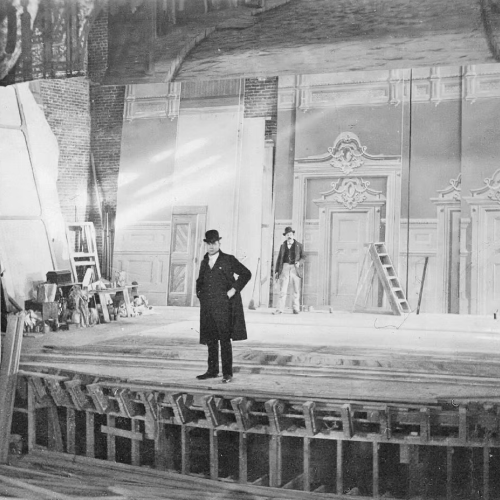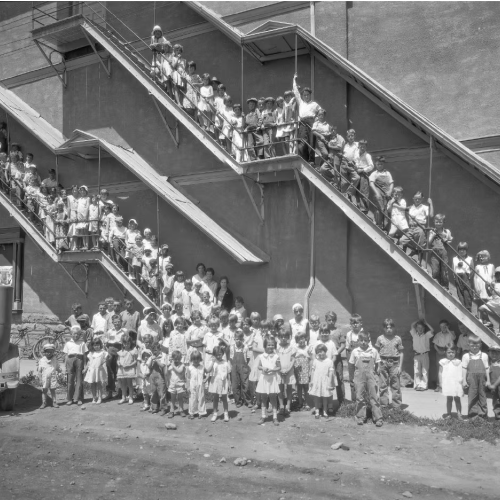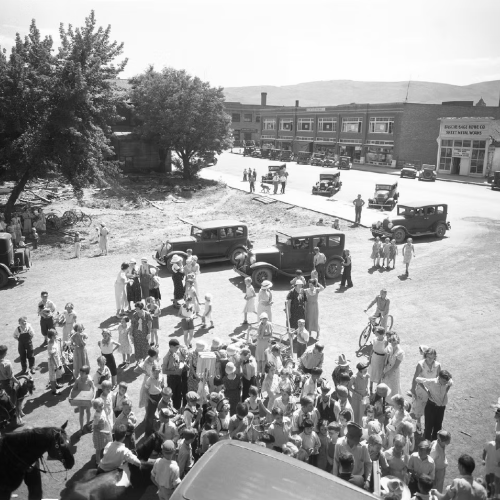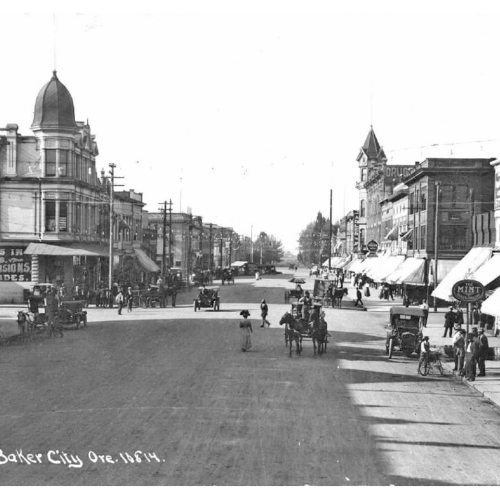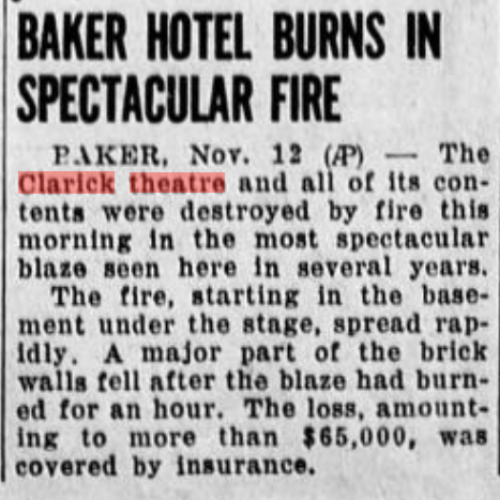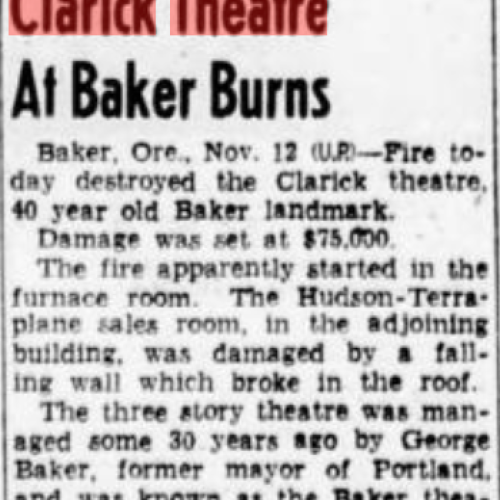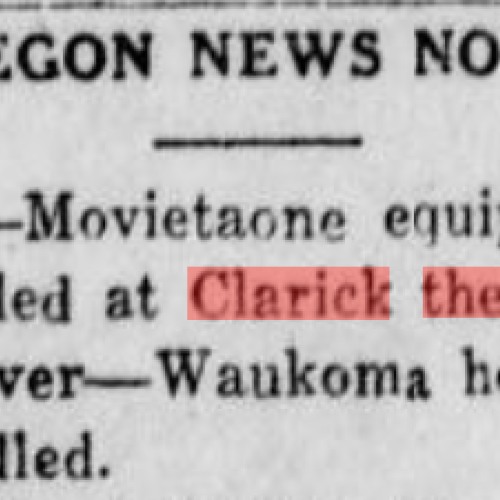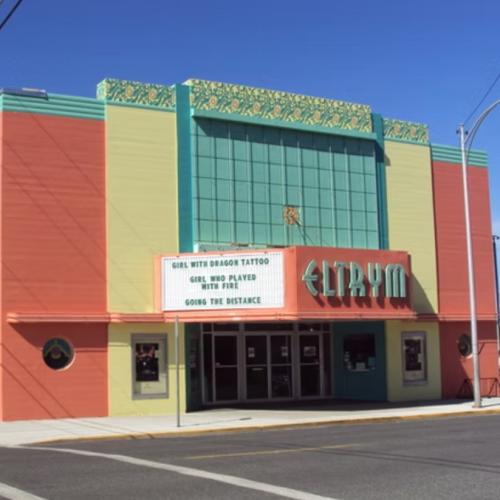The Baker City Opera House, a grand four-story structure with three balconies and a roughly 1,077-seat capacity, opened its doors around 1900, costing $35,000 to construct. For its first quarter-century, it served as a cultural hub, hosting large-scale stage productions traveling between Salt Lake City and Portland, musical performances, and even boxing matches. In 1925, owners K.L. and Jack F. Burk modernized the venue for the burgeoning motion picture era, renaming it the Clarick. The late 1920s brought a flurry of ownership changes. In 1928, Montana theater operator Guy Haselton briefly acquired the Burks' theaters before passing them on to Myrtle Buckmiller and her family, who established the Baker Theatres Company. The Buckmillers ushered in a golden age for the Clarick, installing a Wurlitzer pipe organ in 1929 and upgrading the sound system the following year.
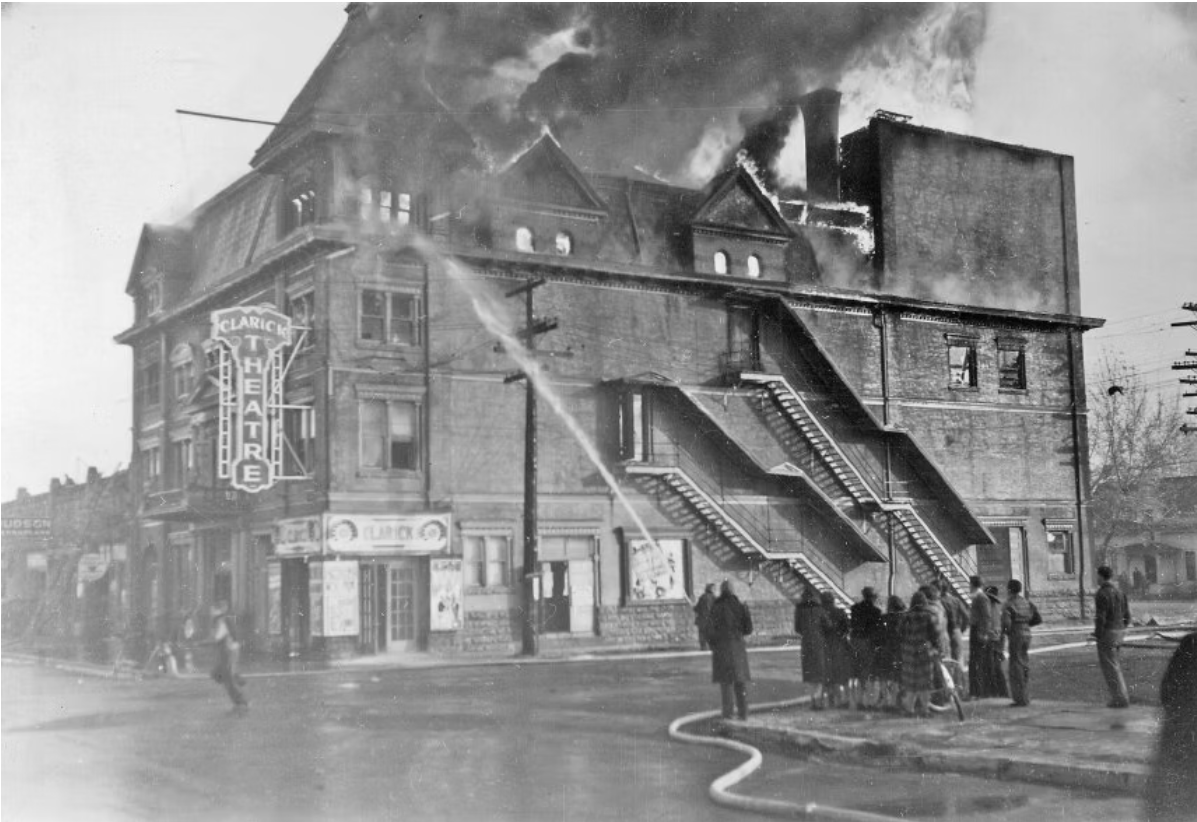
Clarick Theatre Fire, 11-12-1937 - Baker County Library District's historic photo archive
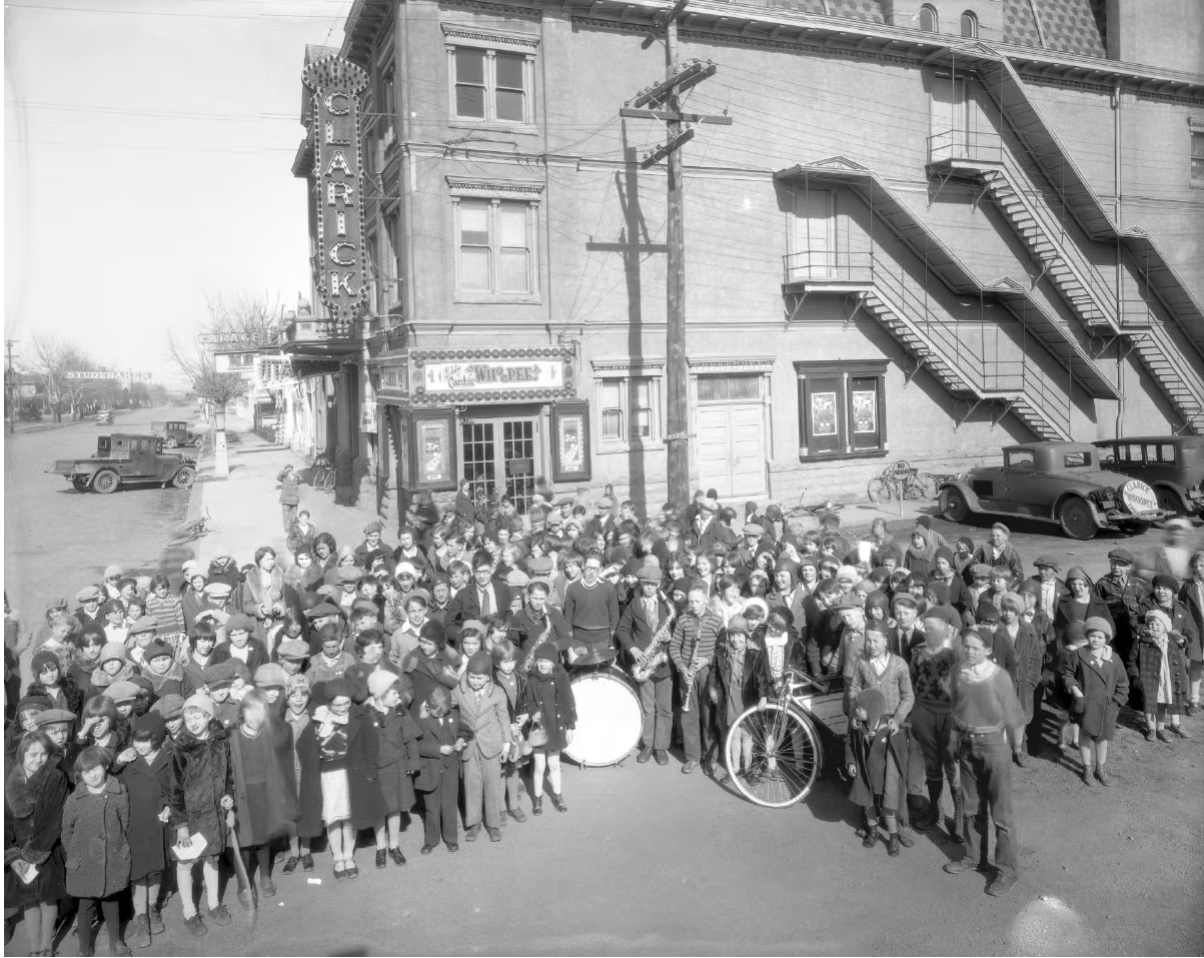
Clarick Theatre, children gathered in the street - Baker County Library District's historic photo archive
The theater thrived throughout the 1930s, offering a diverse program of regularly scheduled films, traveling road shows, becoming a beloved community gathering place. This flourishing period, however, was tragically cut short in 1937. First, a burst pipe flooded the theater's basement, causing significant damage. Then, in the early morning hours of November 12th, a devastating fire erupted, engulfing the Clarick and reducing it to ashes. The fire, believed to have started in the upholstery loges, drew crowds of townspeople and students, a spectacle that etched itself into the memories of Baker residents. The loss of the Clarick, with its grand architecture, Wurlitzer organ, and community focus, left a void in Baker's cultural landscape. While the Buckmillers continued with their other theaters, the Clarick's legacy, marked by both its vibrant programming and its dramatic demise, remains a significant part of Baker's history.
